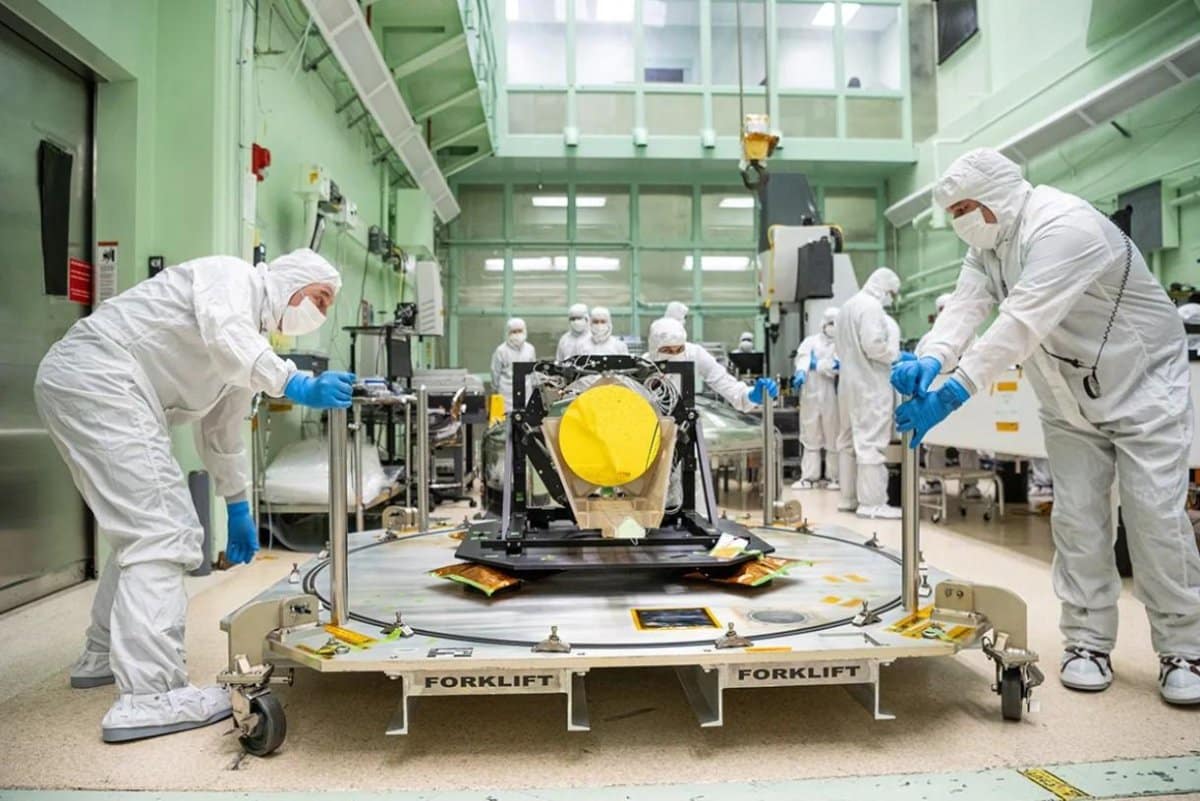
NASA is helping the European Space Agency develop space telescopes that can detect gravitational waves caused when black holes merge and when other cosmic events occur.
The proposed LISA mission would require three spacecraft and six telescopes to measure minute changes in distance between the spacecraft while they maintain a triangular configuration.
Each would be positioned 1.6 million miles from the other two spacecraft in triangle formation that enables them to track changes in gravitational pull by using the onboard telescopes equipped with lasers.
“Twin telescopes aboard each spacecraft will both transmit and receive infrared laser beams to track their companions, and NASA is supplying all six of them to the LISA mission,” NASA Goddard Space Flight Center researcher Ryan DeRosa said.
Each spacecraft would hold two telescopes capable of measuring distance to the picometer, which is equal to one-trillionth of a meter. By comparison, a millimeter is equal to one-thousandth of a meter.
A prototype telescope called the Engineering Development Unit Telescope will help LISA mission scientists to develop the six telescopes that will monitor an area of space that is larger than the sun.
L3Harris Technologies in Rochester, N.Y., developed the prototype telescope, which is named the Engineering Development Unit Telescope, and delivered it to NASA’s Goddard Space Flight Center in May.
The telescope’s primary mirror is coated with gold to enable it to better reflect infrared lasers and reduce the amount of heat lost due to exposure to the cold of deep space.
Engineers used an amber-colored type of ceramic glass called Zerodur that was manufactured in Mainz, Germany, and changes very little when subjected to changes in temperature.
Zerodur commonly is used to create telescope mirrors and other instruments that need a high degree of accuracy.
The LISA mission is projected to launch in about 10 years.






![How To Grow Healthy Vegetables At Home To Add At Your Diet [Video]](https://naijatipsland.com/wp-content/uploads/2024/11/466793198_528225756695676_4492890222511616285_n-100x100.jpg)
![Quick & Easy Guide to Make a Stunning Pot of Colorful Roses![Video]](https://naijatipsland.com/wp-content/uploads/2024/11/466870662_869465511842187_6799189235013992435_n-100x100.jpg)
![Get Ready to BEND Metal Like a PRO with This Creative Tool! [Video]](https://naijatipsland.com/wp-content/uploads/2024/11/467541555_1343339750384284_6873942807394457425_n-100x56.jpg)

